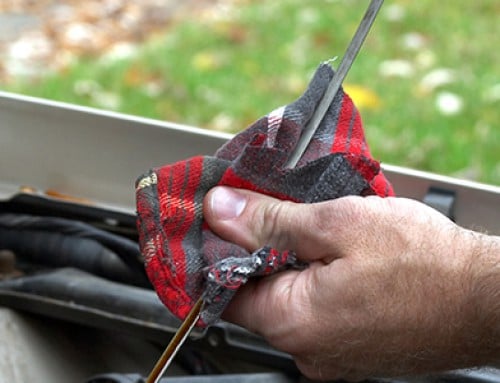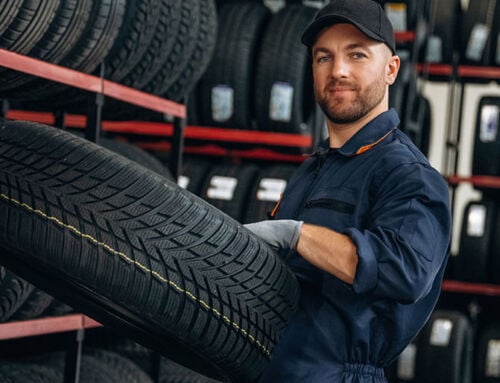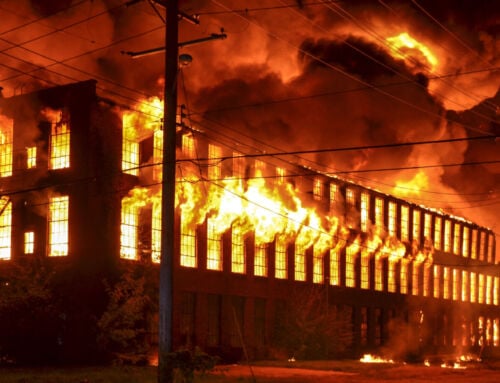Defensive driving can help prevent accidents regardless of the driving conditions, hazards, and the actions of others on the road. Defensive driving techniques involve anticipating and reacting to a situation on the road and the area around your vehicle. By following collision avoidance techniques, the defensive driver can react to any situation, whether it is another driver’s error, a pedestrian, or another scenario that could result in an accident.
Creating a defensive driving culture in your organization can help achieve the best results in collision prevention, efficiency, and profitability. A defensive driver is constantly aware of their surroundings and is always on guard to respond to potentially adverse conditions.
Six adverse conditions that can affect your driving
1. Light
Your vision can be reduced at night. Slowing down may help prevent an incident. Headlights will illuminate the roadway for some distance, but it is important to slow down and keep your stopping distance within your sight distance. Keeping your headlights clean and properly adjusted is important. Use high beams when appropriate and keep interior lights to a minimum.
During the daytime, direct light into a driver’s eye from sunlight, reflections, or vehicle headlights can reduce vision for a short time. Use sunglasses or visors and avoid looking directly into an oncoming vehicle’s headlights.
2. Weather
Traction is compromised with rain, sleet, and snow. Reducing speed, increasing your follow distance, and properly using wipers and defrosters can all increase driver safety. Hydroplaning is a serious danger and can occur even at slow speeds. Regain control by releasing the accelerator. Wet brakes can cause loss of braking power, lockups or pulling to one side.
Heavy rain, snow and fog can impair your visibility. Avoid driving in these conditions as much as possible. Bridges and overpasses are susceptible to icing before the roadway freezes. Melting ice is more slippery than ice that is not wet. Reducing speed is the best defensive technique for icy conditions.
3. Location
Specific locations, such as mountains and curves, can affect how you should drive. Uphill and downhill grades require careful gear changing and brake management. Drivers should slow down prior to entering a curve to avoid skids. Don’t ever exceed the posted speed limit for a curve.
4. Traffic
Adequate following distance is crucial in avoiding rear-end collisions. Allow a four-second interval between you and the vehicle ahead. This helps allow for enough time to react to any hazards that you encounter.
Look well ahead to see hazards that occur. Look 20 seconds ahead of your vehicle or as far as you can see, then let your focus fall back on checking your following distance. Complete checks on both of your mirrors often. Your pace should have you checking mirrors between five and ten second intervals, and not focusing on one spot for more than a couple of seconds to avoid staring.
5. Vehicle condition
Regular inspections can help identify maintenance issues with your vehicle. Particular attention should be given to tires and brakes. Regular maintenance should be performed on your vehicle to ensure that mechanical breakdown does not occur, especially ones that can cause incidents.
Tire pressure is the most important factor in keeping your vehicle on the road. Over or under-inflated tires reduce stability, traction, and fuel efficiency. Check your user manual for the proper tire pressure for your vehicle and ensure this pressure is always maintained.
6. Driver’s condition
Most incidents are caused by driver error. Alcohol and drugs have an obvious effect on a driver’s mental state, but fatigue and distractions, such as handheld devices, also affect the driver’s ability to concentrate on the road. It is recommended that you implement a zero tolerance of alcohol and drugs, provide drivers with education on the effects of fatigue on their driving, and consider creating policies on using handheld devices while behind the wheel.
Driving situations with a greater risk for collisions
Intersections and turning
Vehicles crossing paths, pedestrians using the roadway, and false assumptions all contribute to incidents. As a defensive driver, you need to know the right-of-way rules but never assume that you have it. Always be alert to what others are doing and be prepared to yield the right of way.
Stopping
Stopping collisions are a result of not adhering to the correct following distance and/or failing to stop at all mandatory stops. Therefore, allowing adequate distance between yourself and the vehicle in front of you can help provide enough time to react and avoid collisions.
Parking lots and back lanes all require you to stop prior to the sidewalk to watch for pedestrians and vehicles. Many times, these locations have blind exits where fences or buildings block the vision of the traffic. Be cautious in these locations, especially during icy conditions.
High-risk behaviour
High-risk behaviour includes tailgating, running amber lights, aggressive driving, and distracted driving. These high-risk behaviours can lead to a collision, so drivers should avoid these behaviours.
Creating a culture of defensive driving and making it part of the job can provide the environment your employees need to avoid incidents. Ensure your company has a policy on handheld device use while driving. Ideally, your driver should pull over to the side of the road when it’s safe to answer their mobile phone. Alternatively, allow voicemail to answer the call and return the call when you’re able to pull off the road safely.
Emergency situations
Emergency situations require you to react very quickly. An oncoming vehicle approaching in your lane or a vehicle darting into your path from a blind intersection are examples of emergency situations. A defensive driver is already aware of these hazards, has anticipated them, and is ready to apply a defence in time. Utilizing proper eye lead-time, anticipating hazards, and reacting appropriately will help you avoid incidents.
Ensure that you and your vehicle are protected
Despite your best efforts, sometimes things can still go wrong on the road. That’s when insurance can be helpful. To learn more about how a tailored policy can help protect you, your employees, and your bottom line, visit our Commercial Auto Insurance page today!
This blog is provided for information only and is not a substitute for professional advice. We make no representations or warranties regarding the accuracy or completeness of the information and will not be responsible for any loss arising out of reliance on the information.






